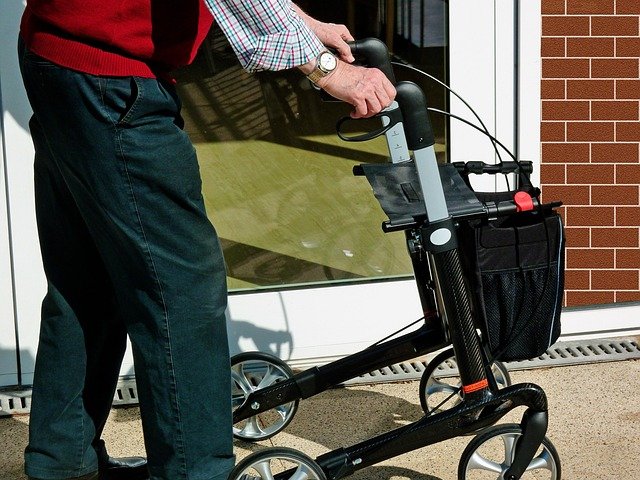Luxury Retirement Community Prices In Australia May Surprise You
The idea of luxury retirement communities often comes with the expectation of exorbitant costs. However, the prices for high-end senior living in 2025 may be more accessible than you think. With evolving market trends, new financial models, and innovative care options, luxury retirement villages are becoming an attractive choice for retirees seeking comfort, security, and convenience.

What to Expect from Senior Independent Living Nearby
Senior independent living communities offer residents the freedom to maintain their autonomy while providing access to support services when needed. These communities typically feature private apartments or villas where seniors can live independently, prepare their own meals, and come and go as they please. Communal areas facilitate social interaction, while organized activities promote engagement and community building.
The appeal of independent living arrangements lies in their balance of privacy and community. Residents maintain control over their daily routines while having easy access to amenities like fitness centers, libraries, gardens, and dining facilities. Most communities also offer transportation services to nearby shopping centers, medical facilities, and entertainment venues, making it convenient for seniors to maintain active lifestyles without the burden of driving.
Security features provide peace of mind for residents and their families. These often include 24-hour emergency response systems, secure entry points, and staff available to assist with issues that may arise. The combination of independence and available support makes these communities particularly attractive to active seniors looking to downsize from larger family homes.
Retirement Village Homes for Sale: A Growing Market
The retirement village real estate market in Australia continues to expand as developers respond to increasing demand from the aging population. According to industry reports, this sector has seen steady growth, with new developments appearing in both metropolitan areas and regional centers across the country.
These properties typically operate under one of several ownership models. The most common arrangement in Australia is the loan-license (or leasehold) model, where residents purchase the right to occupy the unit but don’t own the property outright. Other models include strata title ownership, which functions more like traditional property ownership, and rental arrangements that require no upfront capital investment.
The growing market has led to increased competition among developers, resulting in more diverse housing options and pricing structures. Luxury retirement communities now offer a variety of floor plans, from compact apartments to spacious villas with multiple bedrooms, allowing prospective residents to choose accommodations that suit both their lifestyle preferences and budget constraints.
Retirement Villages for Seniors with No Waiting List
One common misconception about high-quality retirement villages is that they inevitably come with lengthy waiting lists. While this may be true for some established communities in prime locations, many excellent retirement villages across Australia offer immediate availability for prospective residents.
New developments regularly enter the market, providing fresh opportunities without the wait. Additionally, some established communities have implemented more efficient administrative processes to reduce wait times. Prospective residents willing to be flexible about location or specific unit preferences can often find quality accommodations more quickly than they might expect.
To identify villages with immediate availability, seniors can work with retirement living consultants who maintain current vacancy information across multiple properties. Online platforms dedicated to retirement living options also provide real-time availability data, making it easier for seniors to discover communities ready to welcome new residents without delay.
How Much Does a Retirement Home Cost Per Month?
The monthly cost of retirement living varies considerably depending on the type of accommodation, location, and included services. For luxury retirement villages, residents typically face two main categories of costs: the initial entry payment and ongoing monthly fees.
Entry payments for luxury retirement communities can range from $400,000 to over $2 million for premium units in desirable locations. Monthly service fees typically fall between $500 and $1,500, covering maintenance, security, and access to shared amenities. Some communities operate on a deferred management fee model, where residents pay a percentage of their entry payment upon exit, usually between 25-40% of the initial amount.
| Location | Entry Payment Range | Monthly Fee Range |
|---|---|---|
| Sydney Metro | $600,000 - $2,500,000 | $800 - $1,800 |
| Melbourne Metro | $500,000 - $1,800,000 | $750 - $1,500 |
| Brisbane Metro | $450,000 - $1,200,000 | $600 - $1,300 |
| Perth Metro | $400,000 - $1,100,000 | $550 - $1,200 |
| Adelaide Metro | $350,000 - $950,000 | $500 - $1,100 |
| Regional Areas | $300,000 - $800,000 | $450 - $900 |
Prices, rates, or cost estimates mentioned in this article are based on the latest available information but may change over time. Independent research is advised before making financial decisions.
Additional costs may include utilities, meals (if not preparing your own), personal care services, and internet/cable connections. Some villages offer a “user pays” system for certain amenities, while others include comprehensive service packages in the monthly fee. It’s essential to clarify exactly what’s included in quoted prices when comparing options.
The Future of Luxury Retirement Living
The luxury retirement sector in Australia is evolving rapidly to meet changing expectations of retirees. Today’s seniors are more active, tech-savvy, and discerning than previous generations, demanding higher standards in accommodation, amenities, and services.
Emerging trends include environmentally sustainable design features, smart home technology integration, and resort-style amenities that rival high-end hotels. Communities are increasingly focusing on wellness programs, incorporating facilities like yoga studios, hydrotherapy pools, and meditation gardens alongside traditional fitness centers.
The concept of intergenerational living is gaining traction, with some developments integrating childcare centers or creating partnerships with nearby educational institutions. This approach fosters meaningful connections between residents and the broader community, addressing concerns about isolation that sometimes accompany retirement living.
Technology will continue to shape the future of retirement communities, with innovations in telehealth making healthcare more accessible, while automated systems enhance security and convenience. These developments suggest that tomorrow’s luxury retirement communities will offer increasingly sophisticated environments that support independence while providing comprehensive care options.
The evolution of luxury retirement living reflects broader societal changes in how we view aging. Rather than seeing retirement as a withdrawal from active life, modern communities emphasize continued engagement, learning, and contribution – approaches that research consistently links to improved health outcomes and life satisfaction for seniors.




